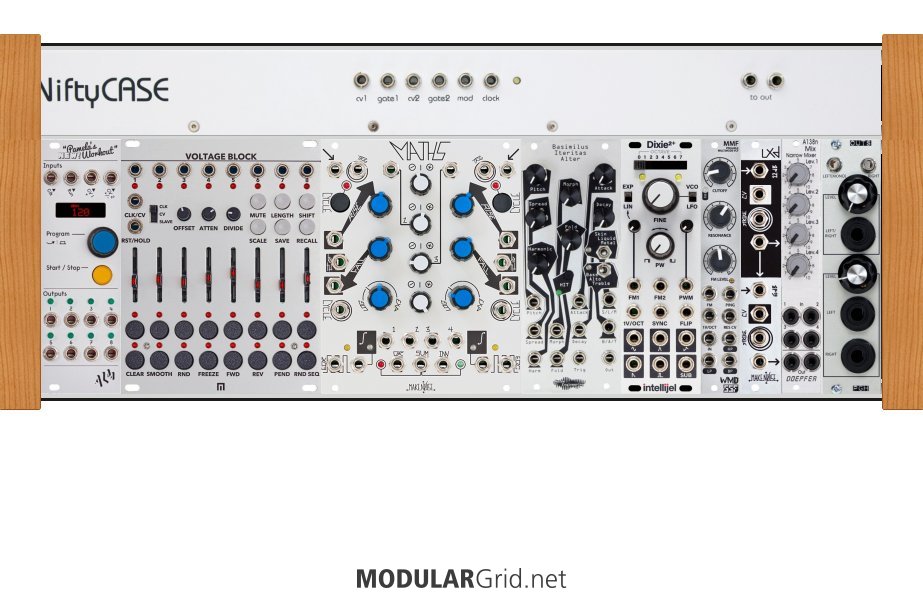Hi Loumakesfriends,
I'm also in the first year of my modular experiment, so I thought I'd share some things that I've learned with regards to your set up.
Your only dedicated VCA is the Sinc and, while that's a great and fun module, you can get twice the VCA/LPG in the same hp with a Make Noise LxD or the 4hp Antenumbra DVCA, for instance. I'm sure you've already heard "you can never have enough VCAs" and it's quite true. You could even consider something like replacing the Sinc and the mixer with an 8hp quad VCA/mixer like the Doepfer A-135-2 Quad VCA. You only have a few sound sources in here, so, most of the time, you could use two channels of the quad for dedicated VCA and two channels for mixing, or three and one. The A-135-2 is nice because it gives you two mix outs: all not VCA-ed signals and all signals.
Having the Voltage Block and the Varigate in a system this small seems like overkill. You have far more channels of sequence than you have modules to drive with them. You also don't have a dedicate clock to drive your sequences. I would suggest something like a Pamela's New Workout (clock + divider + lfo + euclidean sequencer) for clock + gate duties and then, maybe something like a Scales (quantizer + sequencer) for pitch sequencing. An alternative set up would be to replace both with a Hermod, which is much-beloved and does it all in 26 hp. Finally, I would be remiss if I didn't mention that, as you brought up the keystep, my preference would be to shove all pitch sequencing into the fantastic and much less expensive keystep and let's Pam's handle the clocks and gates.
DATA is a cool module but this case is too small to spend that much hp on it. Technically, it's another sound source and an oscilloscope is great when learning modular synth, but you can also just patch into VCV rack through an interface or get an outboard oscilloscope and save precious hp.
Things missing:
- You don't have any attenuators, dedicated LFOs or envelope generators. These are what makes your synth come alive. A few options would be to get a nice small function generator like Joranalogue Contour or Make Noise Function which can generate envelope or LFOs. Personally, though, I would just get the inevitable Maths, which gives you mixing, attenuation, dual envelopes, dual LFOs, and much more. It's also the best module for teaching modular ideas.
- A conventional oscillator. The BIA is great for perc and basslines and you can push it into lots of weird lead sound directions, but, what I found when I started at a similar place was that I quickly started missing an additional meat + potatoes analog oscillator that could complement the BIA, especially if you are planning to do pitch sequencing. In a case this small, it's hard to beat the classic Dixie II+ which sounds incredible and has tons of modulation options. It also doubles as a second LFO if you're only using the BIA voice.
Sketch:
Here's a sample version based on the feedback above that might be interesting:

